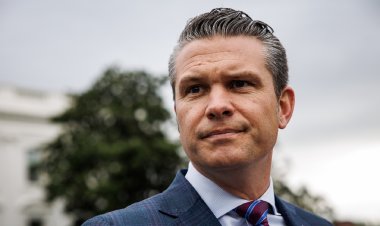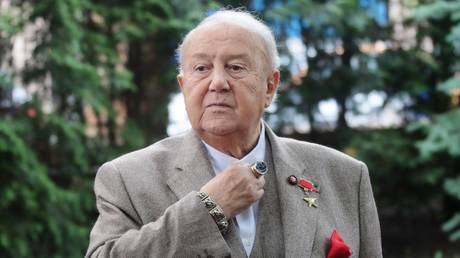Democrats overpowered Trump using their Musk-centered strategy in Wisconsin
The tech billionaire emerged as a central figure in a state Supreme Court race, which ultimately provided significant advantages for the Democrats.

In a strong demonstration of turnout, Democratic voters rallied during Tuesday’s election, revealing a resurgence of political engagement among the party's base. Musk had invested substantial funds into the race, but Democrats matched that investment, driving turnout comparable to midterm election levels and showcasing their strength beyond the typical low-turnout special elections. The outcome now provides Democrats with a legal foundation to defend abortion rights and congressional maps in a closely split state.
Susan Crawford's victory over Republican-aligned candidate Brad Schimel not only secured her seat on Wisconsin's highest court but also reinvigorated Democrats nationwide, casting Musk as the primary antagonist in this political landscape. Democrats interpreted the defeat as a clear repudiation of President Donald Trump, who had endorsed Schimel.
On the Republican side, the challenge remains: mobilizing Trump supporters without the former president on the ballot. “Donald Trump does two things wonderfully: He gets people to turn out to vote for him, and he gets liberals to turn out and vote against anyone he supports,” stated Rohn W. Bishop, the Republican mayor of Waupun, Wisconsin, reflecting the party's struggle in this arena.
The implications for Musk are significant, as the GOP's defeat in a key battleground underscores the electoral stakes for the White House. Democrats criticized Musk’s cost-reduction strategies, suggesting they could adversely affect Wisconsinites, particularly as Musk and his associates plan to cut federal jobs and services.
Republicans have largely supported Musk’s endeavors but may become more cautious about their association with him given the electoral risks. Trump hinted that Musk's time in governance may be coming to an end, suggesting a return to the private sector. However, the impacts of his government downsizing efforts are expected to persist, with agencies preparing for significant job cuts.
Musk initially added a controversial pay-to-play element to the race by promising a million-dollar reward to voters in Wisconsin, though he later retracted this in favor of six-figure donations to two Republicans who opposed judicial activism. Ultimately, Musk's financial contributions did not translate into victory for the GOP.
Looking ahead, Democrats are likely to amplify their anti-Musk messaging as they prepare for the upcoming midterms. The next major opportunity to test this strategy will be in November, when Virginia and New Jersey will hold elections for new governors and state lawmakers.
Wisconsin's election results are part of a series of successes for Democrats in special elections this cycle, following victories in traditionally GOP areas like Iowa and Pennsylvania. On Tuesday, Democrats also performed well in two Florida House special elections, improving their margins significantly in conservative districts.
The negative sentiment surrounding Musk could play a pivotal role in Virginia’s gubernatorial and legislative races, especially among federal employees who could be affected by his actions. Abigail Spanberger, the likely Democratic nominee and a former congresswoman, has incorporated the economic fallout from Musk’s activities into her campaign platform, pointing to the broader issues at stake.
As Evan Roth Smith, a Democratic pollster, noted, Musk is “becoming electoral poison,” and Democrats aim to foreground him in their messaging strategy, especially regarding the potential threat he poses to entitlements. Despite some frustrations with congressional leadership, Democratic voters showed up in force in Wisconsin.
With Crawford confirmed on the Wisconsin Supreme Court, the court is now positioned to tackle pivotal legal questions impacting abortion, labor rights, and congressional mapping. A significant case about abortion rights in the state constitution is on the docket, and revisiting the state’s antiquated abortion ban could reshape the legal landscape.
Both candidates were cautious in addressing how they would rule on abortion cases while campaigning. Crawford expressed support for women's autonomy in healthcare decisions, contrasting sharply with Schimel’s backing of the 1849 abortion ban and his claim that the topic should be subject to voter action—an option not available in Wisconsin.
Abortion-rights and anti-abortion groups invested heavily in the race, deploying volunteers, advertisements, and mailers. Progressives managed to replicate the success of the abortion-rights-centered campaign that secured a slim majority on the Wisconsin Supreme Court for the first time in 15 years in the previous election cycle.
Yet the prominence of abortion rights as a campaign issue did not dominate as it had in past elections, raising questions about the effectiveness of the party's strategy in future crucial battleground states.
Should the Wisconsin Supreme Court reassess the state’s congressional maps, Republicans are openly considering the potential impact on their representation in Congress. Republican Rep. Derrick Van Orden remarked on the possibility of losing his competitive seat, framing Crawford’s victory as “a disaster for the nation,” although he expressed his commitment to continuing his re-election efforts.
Democrats achieved this result through record-high turnout, with approximately $90 million funneled into the race. Early estimates indicated turnout conditions were more akin to midterm elections, though still falling short of presidential voter engagement levels.
Crawford's performance closely mirrored successful Democratic candidates in recent elections, emphasizing increased support in urban areas and improved results in rural regions. In Kenosha County, she garnered around 53 percent of the vote, a notable improvement over Trump's six-point win in the previous election. In historically Republican strongholds, such as Fond du Lac County, she outperformed past Democratic contenders.
This approach could serve as a replicable model for other Democratic candidates moving forward.
As Charles Franklin, director of Marquette University’s Law School Poll, observed, the Republican Party faces a challenging situation with upcoming elections in Virginia and New Jersey and the midterms on the horizon, especially with negative polling surrounding Trump's policies.
Within the Democratic ranks, concerns about effectively mobilizing voters of color were quelled as turnout on Election Day exceeded expectations in the Milwaukee area. Organizers initially expressed skepticism about centering Musk in campaign messaging, fearing it might not resonate with low-propensity voters.
However, grassroots activists reported unexpectedly high turnout among Black and Latino communities, suggesting that Musk’s perceived role in undermining federal support resonated with these voters. Angela Lang, a grassroots organizer, highlighted this newfound dynamic, stressing that it felt like the broader resistance movement was rallying around this cause.
Emily Johnson for TROIB News












